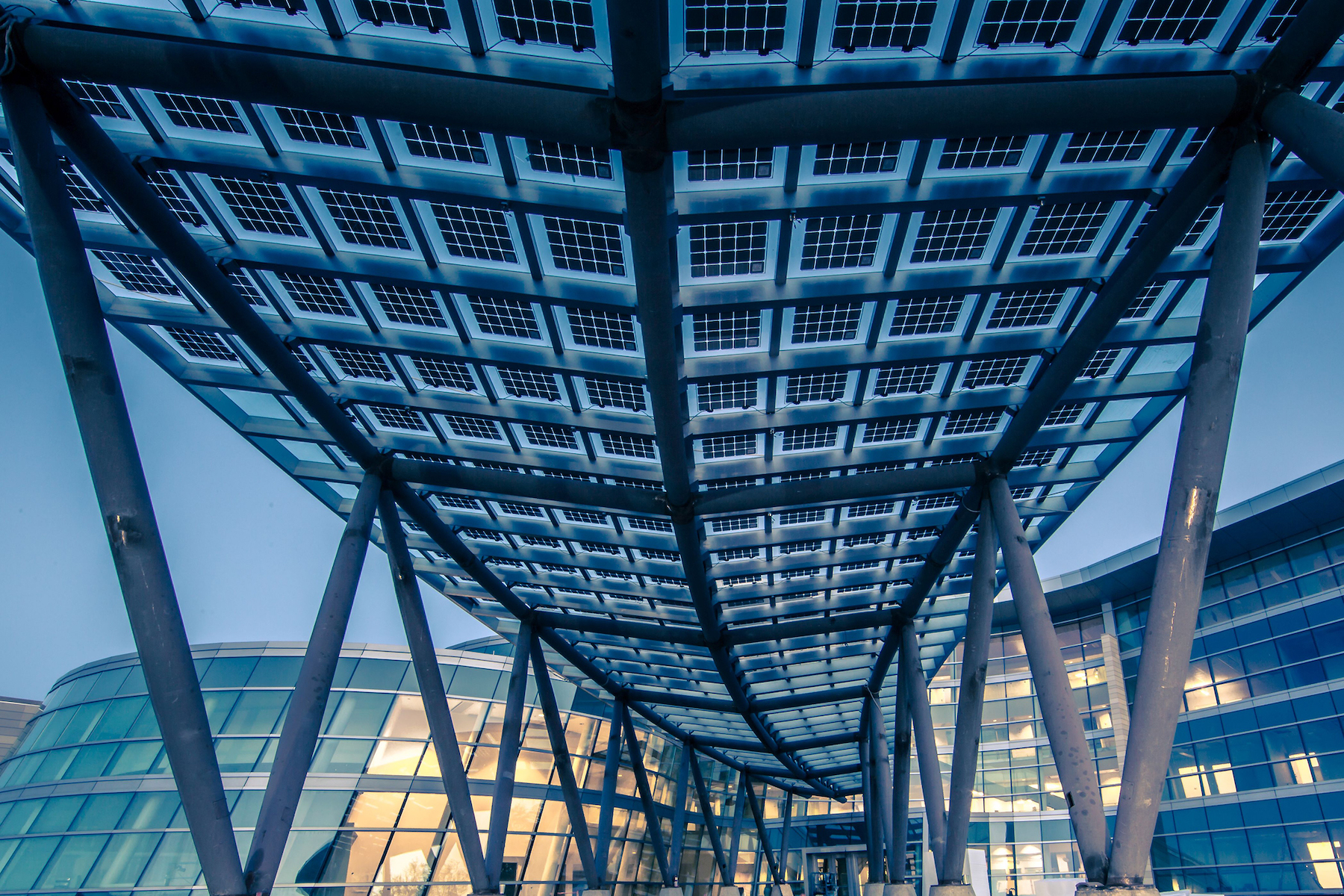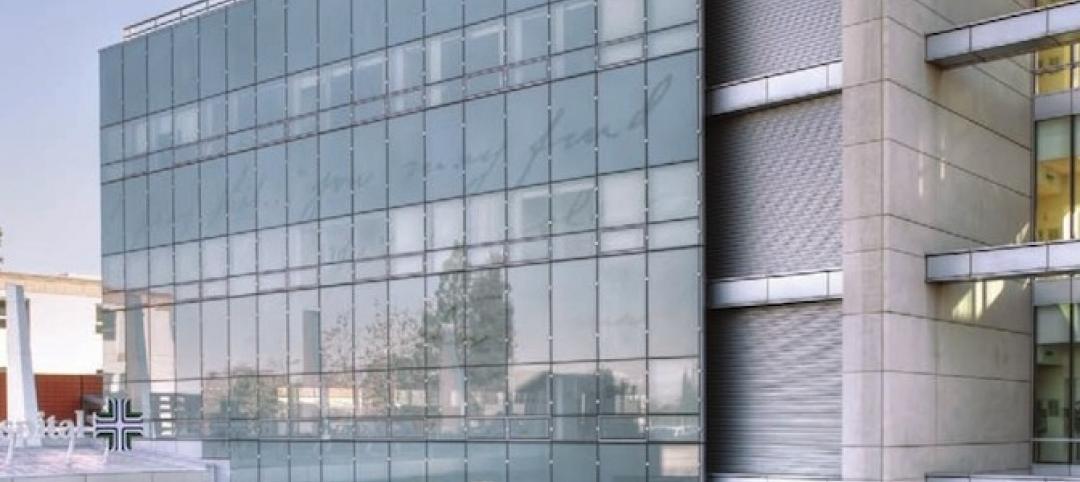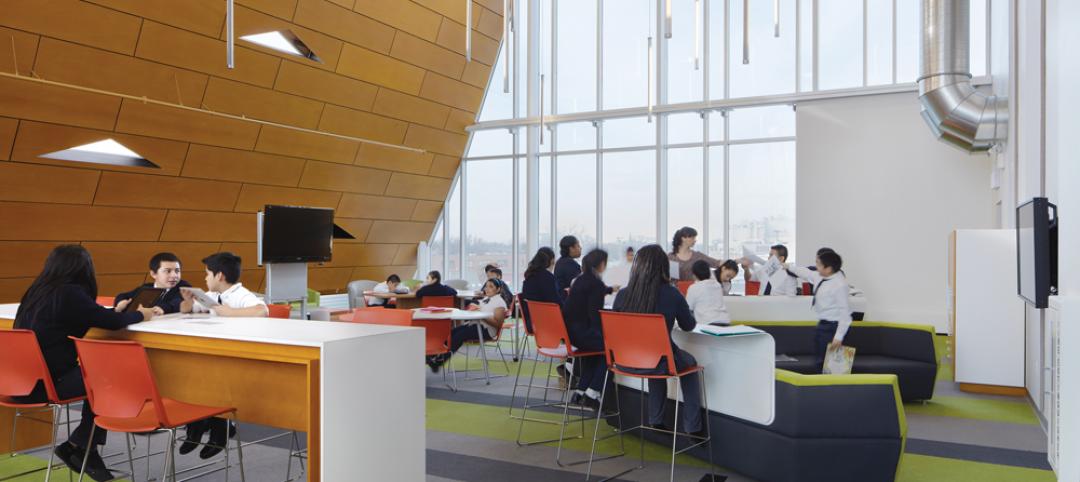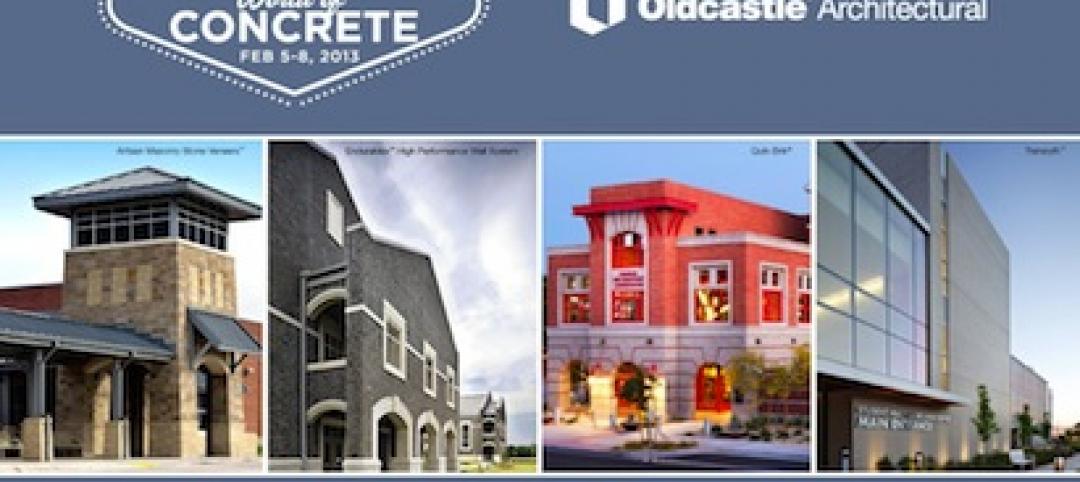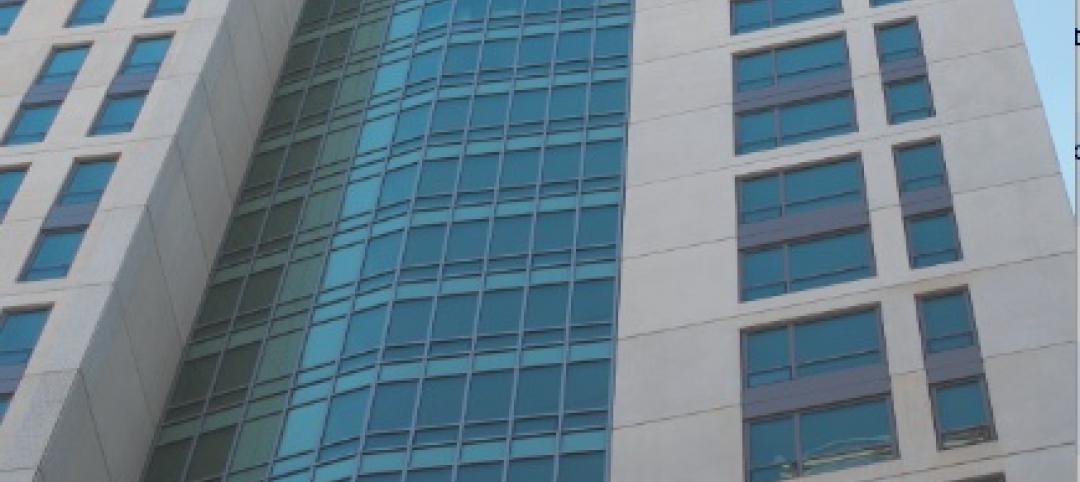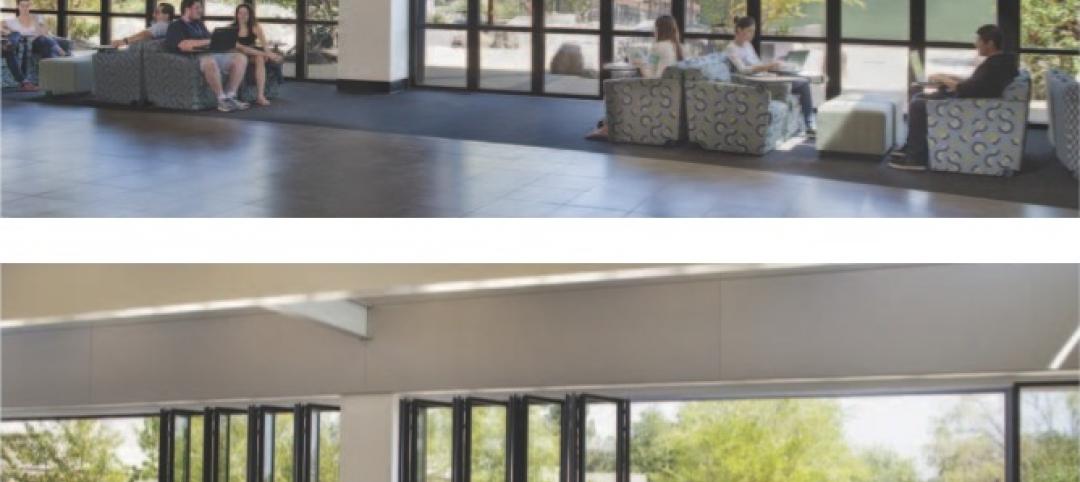Around the world, major government and social initiatives are driving demand for sustainable building design and CO2-free energy. In recent years, as the volume of solar cells being manufactured and installed in buildings has increased, the cost has lowered significantly.
The United States government has supported this effort through the Solar Investment Tax Credit (ITC). Since the program was implemented in 2006, the residential and commercial solar ITC has helped spark 10,000% growth in the U.S. solar industry, with an average annual growth of 50% over the last decade alone. The ITC currently offers a 26% tax credit for solar systems on commercial properties and can be applied to customer-sited commercial solar systems. The ITC credit can apply to aggregate investment in both energy-generating glass panels and electrical components.
Like sustainability, design expectations for commercial buildings are also at an all-time high. In glass specifications, today’s buildings can demand any combination of solar control performance, ultimate transparency, tinted aesthetics and colorful treatments.
Manufacturers like Vitro Architectural Glass have responded with building-integrated photovoltaic (BIPV) glass products like Solarvolt™ BIPV.
Where to Use BIPV Modules
Building-integrated photovoltaic (BIPV) glass modules have emerged as a solution to satisfy these challenges — CO2-free energy generation and design utility — while simultaneously replacing conventional building envelope materials, such as wall cladding or roofing. In fact, BIPV glass can be used to enhance virtually any exterior element: balustrades and balconies, skylights, roof elements, carports and more.
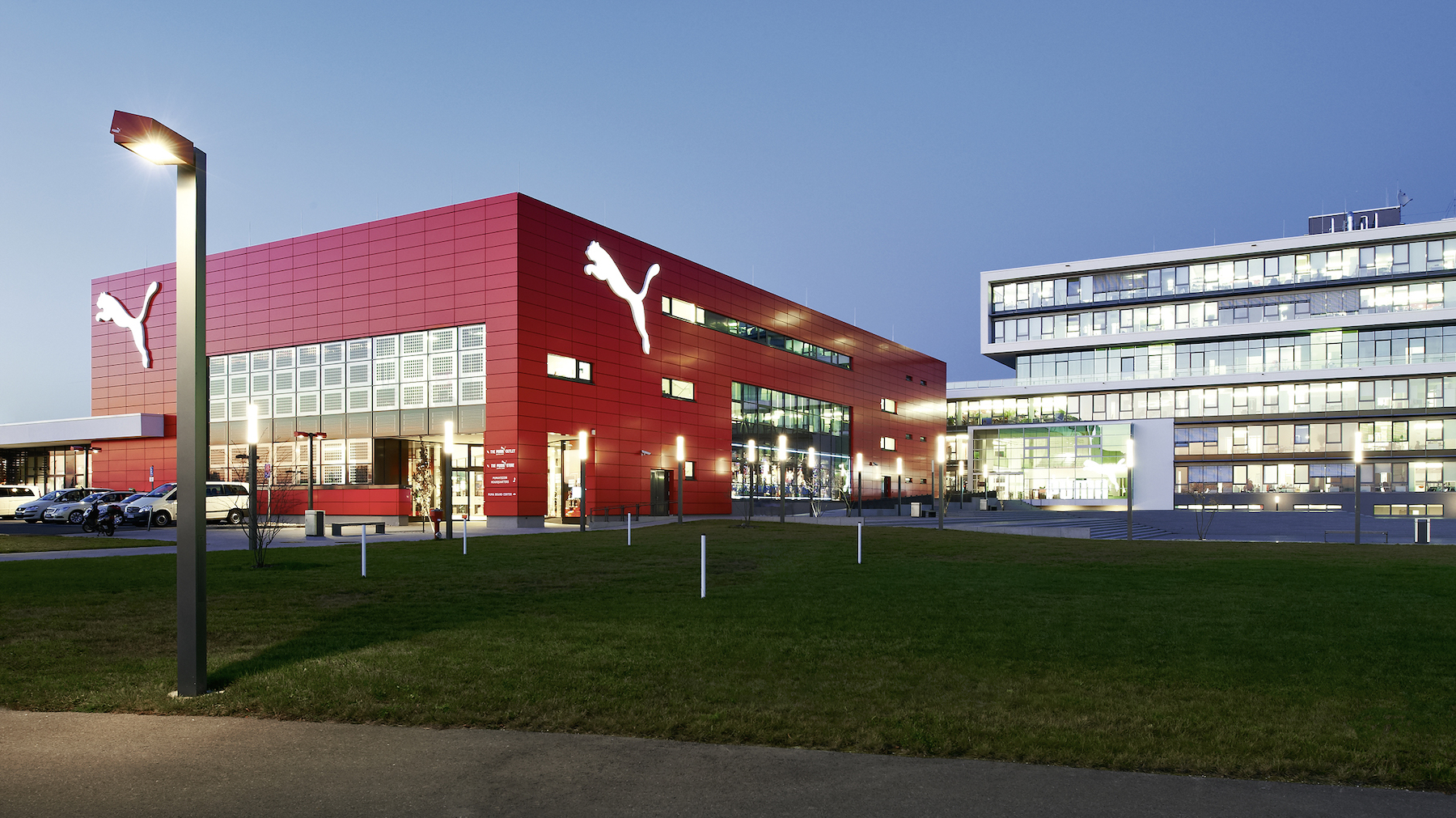
Most notably, BIPV glass modules like Solarvolt™ BIPV can perform the functions of classic glass façades, vision glazing and spandrel glass. In these applications, the solar module replaces conventional building panels and functions as external weather protection for the façade. Tailor-made solar modules comply with all design requirements for glass façades and can be installed with most conventional glass framing systems. For structural glazing, modules utilizing tempered glass with inter-window strips can be integrated into building envelopes and roof surfaces adjacent to heated rooms.
BIPV also can be used for sunshading elements, not only capturing sunlight to generate energy, but also protecting against the sun and glare. BIPV overhead glazing, canopy structures and skylights can harness “solar painting,” a term often used to refer to the interplay of light and shadow resulting from the spacing between individual solar cells. In addition to generating power, BIPV glass balustrades and balconies can highlight the architectural character of buildings and their surroundings while meeting requirements for safety or accident-proof glazing at the same time.
New Design Possibilities
A BIPV module typically consists of solar cells laminated between two glass lites — these can be comprised of virtually any glass product and with any high-performance low-emissivity (low-e) coating to provide yet another measure of environmental performance.
This means BIPV can meet a range of design goals. Designers can realize dynamic, colorful concepts with backpainted BIPV spandrel glass. Blue, green, gray and bronze tinted glasses can also help realize vibrant designs. For ultimate transparency and maximum solar cell performance, low-iron glasses with high visible light transmittance (VLT) also can be used. In fact, Solarvolt™ BIPV modules are compatible with every Vitro Glass product and substrate, including its historic Solarban® family of low-e coatings and Starphire Ultra-Clear® glass.
The BIPV panels’ solar cells themselves can be arranged in rows, alternating patterns and other configurations. Multiple photovoltaic (PV) crystalline silicone technologies also can impact the appearance of the solar cells and their power generation performance. While monocrystalline PV renders a black appearance on solar cells with maximum energy-generation performance, polycrystalline PV delivers a striking blue appearance with slightly reduced performance. For a patterned appearance and higher visible light transmission while retaining some of the energy generation benefits of monocrystalline PV, monocrystalline PV strips are also available.
For decades, glass has been seen as one of the world’s most versatile, beautiful and sustainable building materials. Now, glass is more than just an idea generator — it’s a power generator. Today, glass can collect clean energy, compounding the product’s powerful benefits.
To learn more about Solarvolt™ BIPV glass modules, visit www.vitrosolarvolt.com.
Related Stories
| May 17, 2013
5 things AEC pros need to know about low-e glass
Low-emissivity glasses are critical to making today’s buildings brighter, more energy-efficient, and more sustainable. Here are five tips to help AEC professionals understand the differences among low-e glasses and their impact on building performance.
| May 8, 2013
Preventable curtain wall failures - AIA/CES course
In many cases, curtain wall failures are caused by fairly simple errors that occur during the fabrication and installation process. This presentation will highlight common errors and when they typically occur.
| May 8, 2013
Guardian’s Scott Thomsen headlines Glass Performance Days Finland Conference, June 11-15
Scott Thomsen, president of Guardian Industries Global Flat Glass Group, will engage the global glass technorati in an opening speech at Glass Performance Days Finland June 11-15 in Tampere. In addition, Guardian technologists and scientists will present a wide variety of technical papers and glass industry innovations.
| May 6, 2013
SAFTI FIRST announces 3D Autodesk Revit models for fire rated wall, window, and door systems
SAFTI FIRST, leading USA-manufacturer of fire rated glass and faming systems, is proud to announce that Autodesk Revit models are now available for its fire rated walls, window and door systems via www.safti.com and Autodesk Seek.
| Apr 30, 2013
Tips for designing with fire rated glass - AIA/CES course
Kate Steel of Steel Consulting Services offers tips and advice for choosing the correct code-compliant glazing product for every fire-rated application. This BD+C University class is worth 1.0 AIA LU/HSW.
| Apr 10, 2013
23 things you need to know about charter schools
Charter schools are growing like Topsy. But don’t jump on board unless you know what you’re getting into.
| Apr 8, 2013
Oldcastle Architectural acquires Expocrete Concrete Products
Oldcastle® Architectural has acquired Expocrete Concrete Products Ltd., giving North America’s largest producer of concrete masonry and hardscape products an increased presence in the high-growth region of western Canada.
| Mar 27, 2013
Small but mighty: Berkeley public library’s net-zero gem
The Building Team for Berkeley, Calif.’s new 9,500-sf West Branch library aims to achieve net-zero—and possibly net-positive—energy performance with the help of clever passive design techniques.
| Mar 23, 2013
Fire resistive curtain wall helps mixed-use residential building meet property line requirements
The majority of fire rated glazing applications occur inside the building in order to allow occupants to exit the building safely or provide an area of refuge during a fire. But what happens when the threat of fire comes from the outside? This was the case for The Kensington, a mixed-use residential building in Boston.
| Mar 20, 2013
Folding glass walls revitalize student center
Single-glazed storefronts in the student center at California’s West Valley College were replaced with aluminum-framed, thermally broken windows from NanaWall in a bronze finish that emulates the look of the original building.


